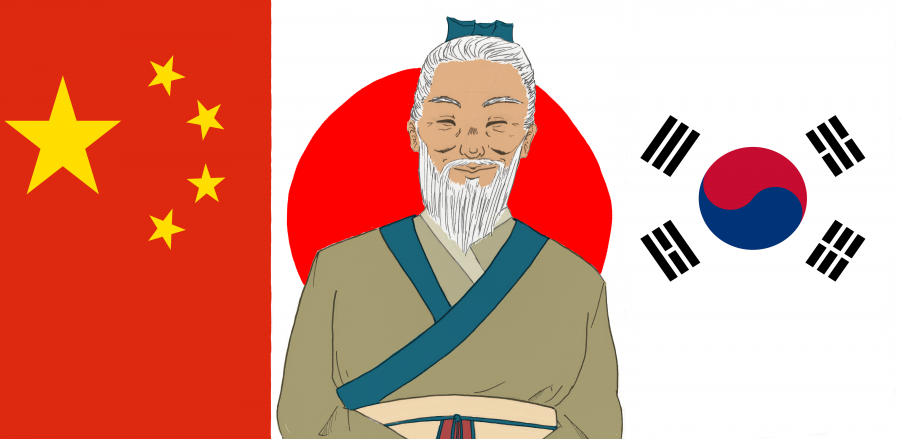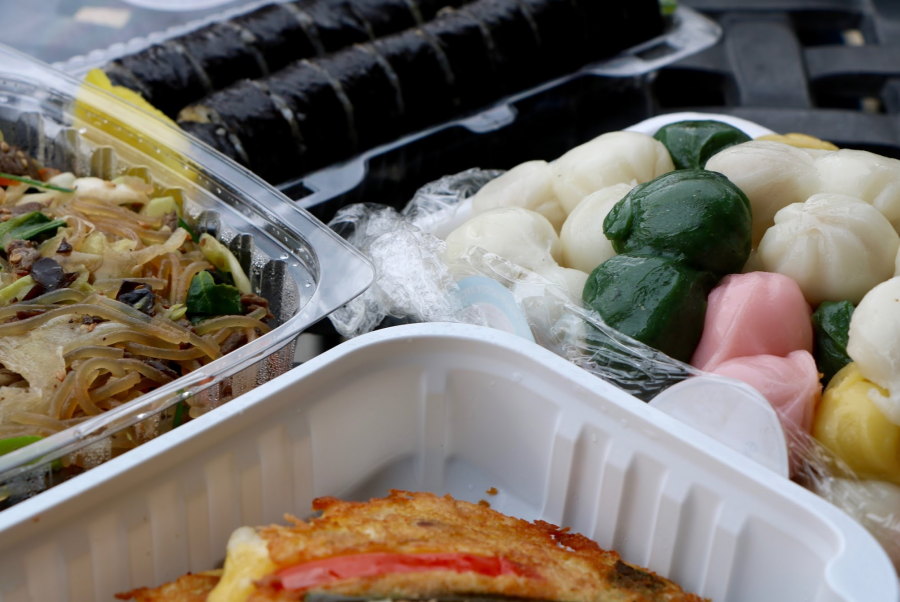Article By: Rachel Chang, Foothill Dragon Press
In our lifetime, we’ve met thousands of individuals and have peered at even more faces. Whether referring to brow bridges or cheekbones, each and every face has its own distinctive structure. This prompts us to question how these differences in facial features came to be. Examining the factors responsible for change especially using different races as points of comparison help us piece together the puzzle of why and how.
The disparity between the Mongoloid and the Caucasian are quite evident. The most prominent Mongoloid facial features— the flat face and slit eyes— evolved to accommodate cold temperatures. Eastern Siberia, was originally inhabited by the Tungus, a Mongoloid race. In temperatures as low as the recorded minus 96 degrees Fahrenheit, a facial structure lacking protuberances minimizes the surface area exposed to the cold. This flattening can be seen in reduced browbridges and the nasal skeleton that is the same altitude with the eye’s cornea. A widened face allows some compensation for the size of the nasal resonance chamber needed for speech, but this cavity needs to be more deeply set in order to heat inhaled air. Thus, to create this required depth, the malars, or cheekbones, are enlarged and extended forward.
Perhaps most striking of the Mongoloid characteristics are the eyes. The monolid, or epicanthic fold, is an adaptation to snow glare and snow blindness: the slit allows minimal reception to bright light. Where this slit occurs naturally on the Mongoloid, its effective design was emulated in man-made goggles created by the Arctic Eskimo, showing the engineer-like role of natural selection. Moreover, this monolid allows further protection from low temperatures. It is the fatty layer molded above and under the eye that creates the slit. Fat, a poor conductor of heat and thus an effective insulator, is distributed throughout the face. This facial fat is so crucial that the eye orbitals are extended vertically to provide additional space for fat.
Recent studies have uncovered new genetic evidence to explain other Asian phenotypes beyond the eyes and facial structure.
The EDARV370A (370A) allele, or a variant of the Ectodysplasin receptor, has been traced as the cause of Eastern Asian thickness of hair, an increase of eccrine glands (more sweat) and a decrease in mammary glands (small breasts).
But if further discussion of the potential selective forces causing 370A, temperature again is a strong candidate— but in this case, the warm temperatures that followed the cold. A large number of eccrine glands supports efficient evapotranspiration, which due to water’s high heat of vaporization, shows a strong homeostatic effect in relieving body heat. As geographical records indicate a warm and humid Central Asia between 40,000 and 32,000years ago, excessive sweating is a selective advantage. Although this heated climate seems to imply there would no longer be a need for slit eyes and flat faces (and while it is true that eyes have become less epicanthic in some areas,) the flat facial structures continue due to a lack of a more advantageous gene to replace it.
In contrasting the defined, thin Caucasian face structure with its flattened, insulated Mongoloid counterpart, the effects of adaptation and natural selection are unmistakable.
But it is the nuances between Asia itself, and more specifically, between the Korean, Japanese, Chinese, that are often mistaken as a singular entity.
“The only thing that all these [Asian] people have in common is the habit of eating rice,” states Carleton Coon, author of Races; a study of the problems of race formation in man. In fact, because rice was commonly used to ferment and preserve foods, and alcohol can lead to bodily damages, genes involved in the ethanol metabolic pathway became a target of selection. As the ethanol is metabolized, by product accumulates in the body, creating the flushed cheeks. For it is the ADH1B*47His allele, passed on 10,000 years ago and now nearly universal to East Asians, that causes the modern Asian to flush red after alcohol consumption.
Archaeological evidence supports that the Koreans were a Tungustic race that migrated from Central Asia to what is now the Korean peninsula in the third millenium BC. The Paleo Asians who were driven out of the peninsula by the Koreans are thought to be ancestors to the Ainu, an important ethnic group of Japan. This supports a study researching allelic frequency of blood markers that found that Koreans are genetically nearest to Mongolians (Central Asia) and are related to the Japanese (Ainu). This is compatible with linguistic evidence that shows the Korean, Mongolian, Tungusic and Japanese language all share a common origin.
Despite the geographical proximity, there is not a demonstrably close genetic relation between the Korean and Han Chinese. This is supported by the fact that the Korean minority living in China for centuries haven’t received much genetic contribution from the Han Chinese.
The Korean population is said to lack most of a sizable ethnic minority compared to Japan and China. Perhaps due to nationalistic pride, Koreans have maintained their cultural and linguistic identity throughout historical migrations. Contrastingly, modern China, with over 3.7 million square miles, is comprised of 92 percent Han- Chinese and another 56 prominent minorities, including the Uyghurs, Tibetans and Hui.
The modern Japanese genotype is a result of an admixture of the Jomon and Yayoi farmers. Characterized with more wide-set eyes and a more pronounced facial topography, the Jomon were the primary inhabitants of Japan until circa 300 BC. As Japan transitioned from being hunter gatherers to farmers, the period raised the carrying capacity that increased the population and promoted more movement and a dilution of the gene pool.
“The peoples of eastern Asian are quite diverse, and the national boundaries [between ] China, Korea and Japan are relatively recent political compositions that contain a range of different ethnic and cultural groups,” notes Agustin Fuentes, an anthropology professor at the University of Notre Dame.
Even within these nations, the “Japanese, Korean and Chinese are not biological units or even homogeneous populations.”
The differences between the Caucasian and Mongoloid are prominent, but it is the differences within the Mongoloid that lacks recognition. Whether it is their complex social history or evolutionary genetics, the Chinese, Japanese and Korean are significantly different.












